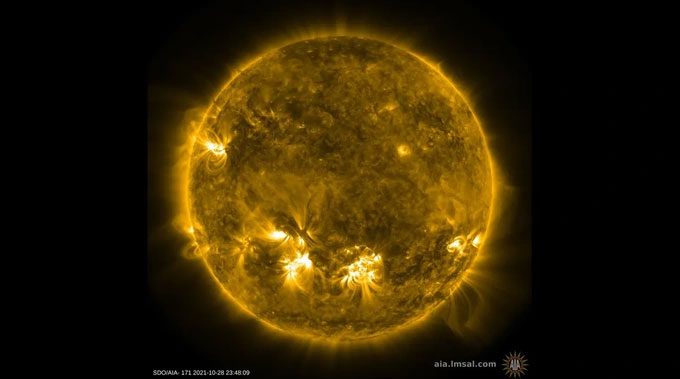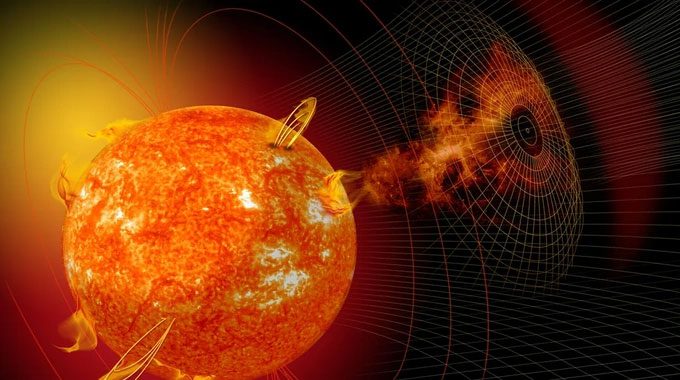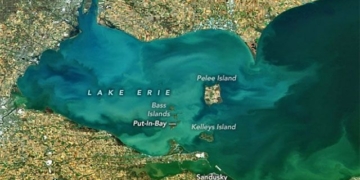Two planets on opposite sides of the Sun are affected by cosmic radiation from the same event.
On October 28, scientists recorded a large coronal mass ejection occurring on the Sun, as charged particles from a plasma stream “attacked” the planets in the system.

Image of the Sun on October 28, during the coronal mass ejection. (Photo: SDO/AIA).
Notably, this appears to be the first event that simultaneously affected Earth, the Moon, and Mars, as reported.
To achieve this, the research team relied on measurements collected from the Eu:CROPIS satellite (Earth), LRO (Moon), and ExoMars TGO (Mars).
Specifically, the Earth-orbiting satellite Eu:CROPIS measured radiation from the plasma stream at approximately 10 milligray (PV: Gray is the standard unit used to measure the absorption of ionizing radiation).
The NASA Lunar Reconnaissance Orbiter (LRO) measured a threshold of 31 milligray in lunar orbit, and ExoMars TGO recorded 9 milligray from Mars.
Although the event is believed to have caused “negligible” effects on Earth’s surface, it presents an intriguing phenomenon from a scientific perspective. It provides a unique view of the impact of cosmic radiation from the same event occurring within the Solar System.

Simulation of the coronal mass ejection at the Sun. (Photo: NASA).
Since 1940, there have been a total of 73 instances where high-energy particles were able to “attack” Earth by penetrating the planet’s magnetic field and reaching its surface.
In several specific cases, this activity was strong enough to generate powerful energy bursts that could knock out satellites or infrastructure on Earth.
Research from a group of scientists at Boston University (USA) and the University of Sweden even suggests that solar radiation could increase the risk of heart attacks for some individuals, potentially leading to death.
In June, geomagnetic storms also caused a spike in Earth’s atmospheric temperature, reaching levels not seen in the last 20 years.
Martin Mlynczak, a researcher from NASA’s TIMED mission, explained that storms accumulate energy in the ionosphere, causing it to heat up due to increased infrared emissions from nitric oxide and carbon dioxide.
Meanwhile, due to the lack of a magnetic field on Mars and the Moon, cosmic radiation could have an even greater impact.
According to researchers, measuring radiation in different locations within the Solar System provides insights into the radiation risks for space exploration missions.
“Understanding these events is crucial for future lunar and Martian surface exploration missions,” stated Jingnan Guo, a scientist studying the October 28 event.
Supporting this view, Colin Wilson, a scientist from the ExoMars TGO project, affirmed: “Space radiation poses a real danger to our exploratory activities throughout the Solar System.”
Therefore, measuring high-level radiation events using satellites and robots is essential for preparing for crewed missions beyond Earth.


















































